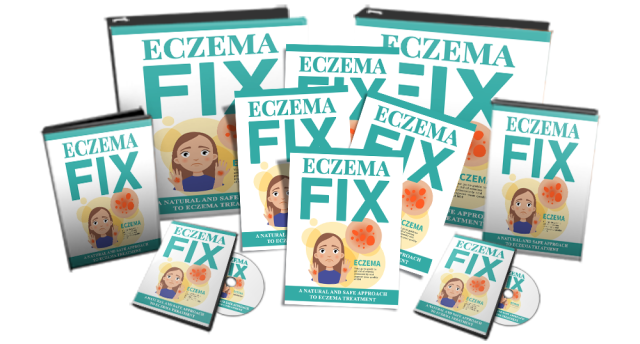Is Dyshidrotic Eczema Contagious? What You Should Know About Dyshidrosis
By Vanessa Richards
January 10, 2024 • Fact checked by Dumb Little Man
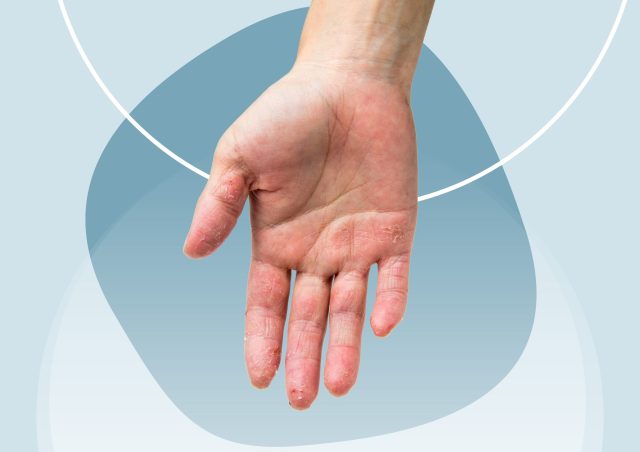
Eczema is a group of skin conditions that currently affects over 10% of the US population. Dyshidrotic eczema (also known as pompholyx eczema) is a form of foot and hand eczema. That means it primarily affects the palms of the hands, the soles of the feet, & the sides of the fingers (hands or feet).
People with dyshidrotic eczema suffer from sorely dry & itchy skin on their hands and feet. They also see intensely itchy blisters develop on their hands and feet.
According to the Journal of the European Academy of Dermatology, among all the eczema types, dyshidrotic eczema is the fifth-most common form of eczema in the world.
So, why do people develop dyshidrotic eczema & is it contagious? How is it different from other skin diseases like chronic hand dermatitis & are you at risk of catching it?
Let’s do a brief dyshidrotic eczema overview & answer these questions one by one.
What Causes Dyshidrotic Eczema?
Like most forms of vesicular eczema, the exact cause of dyshidrotic eczema is still undetermined. However, most people who are prone to getting dyshidrotic eczema are hypersensitive to certain triggers.
Here are some things that trigger dyshidrotic eczema:
- Certain metals like cobalt & nickel
- Specific ingredients in skincare products
- Medication like birth control pills, SSRIs, aspirin, etc.
- Smoking
- Intravenous Immunoglobulin (IVIG) Infusions
- Stress
- Over-exposure to ultraviolet light
- Sudden changes in temperatures & surroundings
Most people with dyshidrotic eczema typically suffer from other similar skin diseases like palmoplantar eczema or contact dermatitis. E.g., according to the UK’s National Eczema Society, 50% of people in the UK with dyshidrotic eczema also suffer from atopic dermatitis.
Who Is At Risk of Developing Dyshidrotic Eczema?
People with dyshidrotic eczema typically have other eczema types elsewhere on their bodies. They usually develop dyshidrotic eczema as a one-time episode. But, if they don’t prevent flare-ups promptly, dyshidrotic eczema can become a chronic condition. Here are the main risk factors for this skin disease –
- Having other types of skin diseases that affect the hands and feet (e.g., people with over-sweaty hands, hand dermatitis, foot eczema, etc.)
- Seasonal allergies
- Allergic reactions to certain food items
- Being allergic to certain metals
- Having a family history of eczema
- Working with cement, metals, & other raw metals
Dyshidrotic eczema is more common in females under 40 years of age. Is it contagious? No. But, the affected areas can suffer from bacterial infections or fungal infections.
Then, these secondary infections can be highly contagious. You may pass it to other people via direct skin contact.
Dyshidrotic Eczema in Children
Dyshidrotic dermatitis is extremely rare in younger children & it usually occurs in children over the age of 10. Children are more prone to atopic dermatitis another form of chronic eczema. Currently, atopic dermatitis affects 25% of all children in the US.
Symptoms of Dyshidrotic Eczema
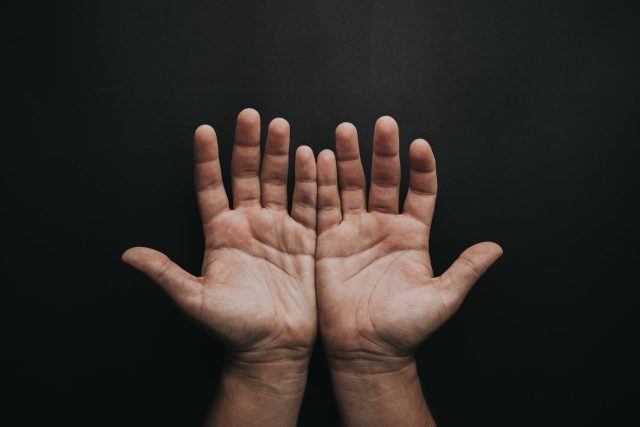
One of the main symptoms of dyshidrotic eczema is the appearance of small, fluid-filled blisters on the palms of your hands, soles of your feet & and on the sides of your fingers/toes.
These itchy blisters start small but they can quickly become confluent (joined together) and appear as large blisters if you scratch them too much.
Dyshidrotic eczema only affects the hands and feet. That’s because the dry skin in these areas is highly prone to exposure to potential sources of irritation/aggravation like sweat or heat. If you ever notice blisters on these areas of your body, don’t scratch them to relieve itching.
Instead, check if you’re experiencing other common symptoms of dyshidrotic eczema such as:
- A burning sensation in the palms or soles
- Extreme itching & prickling sensations on your hands or feet
- The appearance of itchy blisters on the sides of your fingers & toes
- Painfully dry skin
Dyshidrotic eczema is an episodic disease. Patients typically experience small periods of relief. Then they experience severe dyshidrotic eczema flares where these symptoms worsen & the blisters start growing bigger.
Before they weep fluid or suffer from fungal/bacterial infections, patients must get their dyshidrotic eczema diagnosed.
How to Diagnose Dyshidrotic Eczema?
Dermatologists diagnose dyshidrotic eczema by checking the patient’s medical history. They may also run skin tests, and blood tests, and assess the patient’s family history of eczema.
Once a patient gets his/her dyshidrotic eczema diagnosed, they can buy over-the-counter medicines like topical corticosteroids. The patient can even apply for cutaneous surgery.
But, serious medications or surgeries are only required for extremely severe cases of dyshidrotic eczema. Typically, healthcare providers recommend simple practices & ointments to patients.
With the right knowledge, dyshidrotic eczema can even be managed at home.
How is Dyshidrotic Eczema Treated?
There are no surefire treatments for dyshidrotic eczema. Patients can only manage this skin disease by learning how to prevent flare-ups. That’s where the right information can be priceless.
Here are two of the most highly-acclaimed educational resources on dyshidrotic eczema. They’ve helped thousands of people across the globe effectively manage this condition:
1. A Permanent Cure For Eczema: Eczema Free You
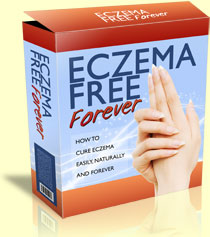
Eczema Free You is an online eBook guide created by alternative medical expert Rachel Anderson. Since its release, this book has gained worldwide acclaim because it has simplified the process of permanently treating eczema.
According to the author, dyshidrotic eczema can be treated at home if you address all the things that are impacting your immune system. She discusses all the things that impact the immune system & cause the skin to flare up.
Address these underlying causes & you can easily prevent dyshidrotic eczema flares. The eBook features detailed guides on natural healing techniques and herbal remedies that instantly ease symptoms of dyshidrotic eczema (dry skin, itching, etc.)
More importantly, the book features a detailed step-by-step program on how to eliminate the root causes of dyshidrotic eczema. If you want to learn how to eliminate eczema without using medications, dangerous creams, and steroids, this book is a must-read for you.
You’ll learn about different eczema types, what causes them, and how to treat them naturally.
Read this comprehensive guidebook now. Not only will you be able to stop the itching once and for all, but you’ll also be able to optimize your body’s ability to heal itself from all types of skin problems.
Shop Eczema Free You at the Official Website.
2. Best Natural Remedy for Eczema: Eczema Fix
Eczema Fix is another extremely popular online program for preventing, managing, & treating eczema. The book discusses various natural approaches to treating the excruciating symptoms of dyshidrotic eczema. It gives a clear explanation of how to fortify the skin’s barrier function.
This involves improving your digestive health, optimizing your immune system, & preventing the little things that can trigger dyshidrotic eczema flares. Sounds complicated? Don’t worry.
All the scientific & nutritional information in Eczema Fix is presented in a very easy-to-read fashion. Once you read this info, you’ll be able to improve your diet & integrate the right skin care routines into your life.
Eczema Fix was created by medical researchers who specialize in eczema research. This online program is the result of their life’s work on tackling eczema from the inside.
Read this book, understand what eczema is, & identify your triggers. Then, apply the solutions in this book to easily manage your condition using basic home remedies.
Shop Eczema Fix at the Official Website.
Full Article: Eczema Fix Program Reviews 2024: Does it Really Work?
Treatments for Mild Outbreaks
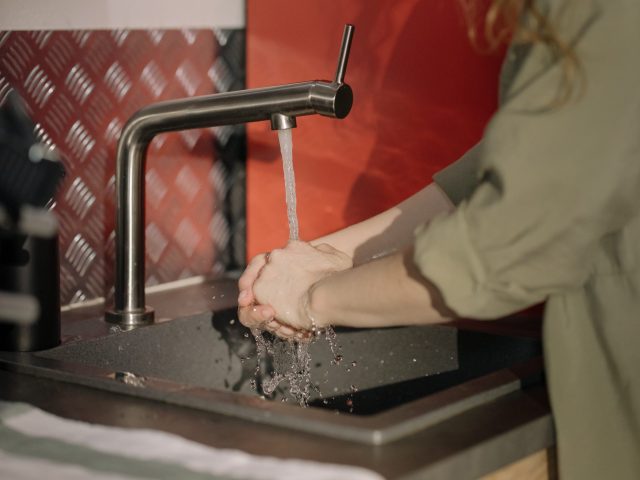
The information in the online programs mentioned above has been supported by various clinical studies. By reading these eBooks, you can easily manage mild outbreaks of dyshidrotic eczema at home.
In addition to that, you can also try out these self-care tips recommended by the AAD:
- Wash the affected areas with lukewarm water and an organic, fragrance-free cleanser. Then, apply a soothing moisturizer to your wet hands & feet to calm down the itching.
- Use moisturizers that contain ceramides as they can repair your damaged skin barrier.
- Try applying cool compresses to the affected areas as frequently as you can to reduce inflammation.
- Wear gloves to prevent the itchy blisters from bursting.
- Avoid touching anything that can potentially trigger dyshidrotic eczema (e.g., hot metal objects)
Try out these basic treatments for a few weeks. If your dyshidrotic eczema worsens, ask your dermatologist about prescription topical corticosteroids or steroids.
For mild outbreaks, healthcare providers prescribe topical corticosteroids, tacrolimus ointments, & anti-itch medications.
Treatments for More Severe Outbreaks
For severe outbreaks of dyshidrotic eczema, doctors typically prescribe a mixture of solutions. They include:
- Asking the patient to regularly apply topical corticosteroids to the affected areas
- Steroid injections
- Ultraviolet light therapy
- Antihistamines
- Antifungal medications
- Oral immunosuppressants
- Immunosuppressant creams
- Acupuncture, acupressure, & other forms of skin therapies
Home Remedies for Dyshidrotic Eczema
Both programs mentioned above feature ample information on how to manage dyshidrotic eczema at home. For example, the Eczema Fix program features a detailed guide on wet wrap therapy. It’s a form of skin therapy that can calm down severe flares & itching. Some other natural remedies mentioned in these two eBooks include –
- Washing the affected areas with lukewarm water
- Draining large blisters with sterile needles
- Applying topical creams or ointments & bandaging the skin until the blisters heal
Dietary Changes to Curb Dyshidrotic Eczema
There are two types of food items that are known to trigger dyshidrotic eczema – they’re food items that contain nickel & cobalt. These natural elements are found in several food items such as:
- Cobalt: Brazilian nuts, flaxseeds, & chickpeas
- Nickel: Cereals, tea, & dried fruit
Going on a low cobalt/nickel diet is a must for anyone with this skin condition. Your healthcare provider may also put you on a specialized diet based on your existing allergies & consumption patterns.
Complications of Dyshidrotic Eczema
Intensely itchy blisters – that’s the main complication of dyshidrotic eczema. Large blisters can cause severe discomfort, itching, and pain. People must manage their dyshidrotic eczema in a way that the problem never escalates to the point of severe discomfort.
Prevention and Control of Outbreaks
Avoiding stress, sleeping well, staying hydrated at all times, and eating the right diet – are the most basic things you can do to prevent outbreaks of dyshidrotic eczema. Applying moisturizer daily to moisturize & strengthen your skin is another effective prevention strategy.
Dyshidrotic Eczema in the Long Term
Your dyshidrotic eczema may heal completely today & return a few weeks later. The only long-term cure for this skin disease is following a personalized treatment plan on a daily basis. Be it avoiding certain types of food or using certain types of skincare products – do everything you do to avoid dyshidrotic eczema flares regularly.
Never scratch the blisters as scratching only makes them worse. Also, avoid getting dry skin as it’s the clearest gateway to an outbreak of dyshidrotic eczema.
Takeaway
Dyshidrotic eczema is a serious skin condition. Those who’ve suffered through it know that it has both physical & psychological effects. Dealing with the constant pain, itching & the social stigma of having visible blisters on the skin isn’t easy.
That’s why people who develop dyshidrotic eczema, must also develop an arsenal of information on how to tackle this skin disease at home, using the simplest remedies. That’s what online programs like Eczema Free You & Eczema Fix Program attempt to achieve.
Try reading these online programs if you’re currently suffering from dyshidrotic eczema. Know everything you can about this skin condition so that you can prevent it from hampering your day-to-day life.
Click here to get Eczema Free You Digital Program at a Discounted Price.
>>Related Article: What Causes Eczema Flare-ups? 8 Possible Triggers & Treatments
Dyshidrotic Eczema (Dyshidrosis) FAQs
What triggers dyshidrotic eczema?
Seasonal allergies, exposure to certain metals, stress, & over-sweating are the main triggers of dyshidrotic eczema.
What is the fastest way to get rid of dyshidrotic eczema?
Applying cool compresses & antihistamine medications to the affected areas.
Does dyshidrotic eczema ever go away?
Technically, no. If managed properly, dyshidrotic eczema can go away for a long time. But, repeated exposure to triggers like stress or over-sweating can cause this skin condition to return.
Vanessa Richards
Vanessa is a mom of 3 lovely children and a software geek. Outside of her career as a health and wellness instructor. She enjoys writing and researching on topics such as finance, software, health and culinary.


